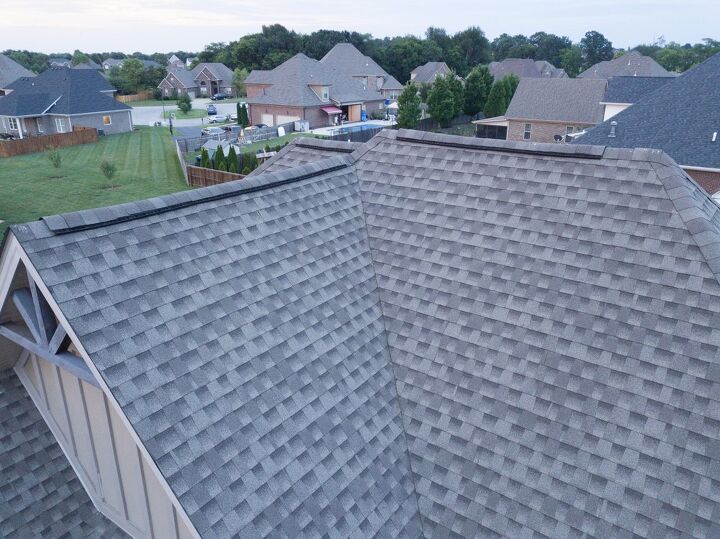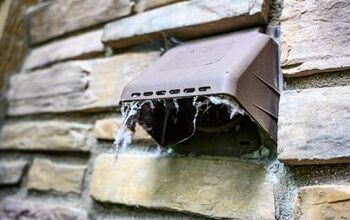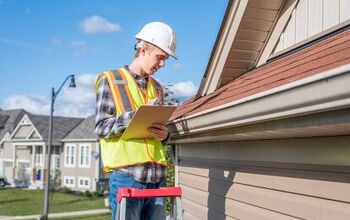What Is A Ridge Vent On A Roof? (Find Out Now!)

Without proper ventilation, humid air can stagnate and lead to build-ups of mold in your home. Including a ridge vent on your roof is one of the most effective ways to avoid that unhealthy situation.
The main function of a ridge vent is to allow air to escape from your attic. Trapped air causes high humidity, leading to mold and mildew issues. Ridge vents prevent that problem by permitting air to circulate out of your home. These vents include a small slit that runs along a roof’s peak and blends well with shingling.
If you want to learn more about ridge vents, read on. This article will share all you need to know about how these vents serve your home.
Do You Need Roofing, Siding, or Gutter Installers?
Get free, zero-commitment quotes from pro contractors near you.

Ridge Vents Let Air Out of Your Home
In general, the vents on your home serve one of two purposes. They either let air into your home, or they let the air out.
Vents that let air in are known as intake vents, while those with the opposite function are exhaust vents. Ridge vents belong to that second category.
As is the case with nearly all exhaust vents, ridge vents sit on the top of your home. However, ridge vents also have traits that make them advantageous over other options. One such trait is appearance.
What a Ridge Vent Looks Like
If you are unfamiliar with ridge vents, the odds are you have seen many in your life without realizing it. That is because ridge vents perform their main functionality with subtlety.
Ridge vents consist of nothing more than a small gap that runs along the peak of a pitched roof. The openings of these vents often measure just a few inches.
Ridge vents also blend well with the shingling that is common on so many single-family homes. That unobtrusive look is one of the reasons ridge vents are such a popular option. But ridge vents also prove to be highly functional too.
How a Ridge Vent Works
Ridge vents make use of natural air currents to release hot air from your home. Here is how that airflow typically unfolds:
- Warm, humid air in your home rises naturally to the attic
- Wind currents pass over your roof, creating negative pressure outside the ridge vent
- Air in your attic flows out through the vent into the area of negative pressure
On the surface, this process seems inconsequential. However, ridge vents can help you avoid some significant health risks and offer you some incredible benefits as well.
Advantages of Ridge Vents
You now know the basics of what a ridge vent looks like and how one functions. Now, let’s look at some of the advantages that these vents afford you. Beyond maintaining proper ventilation, a well-functioning ridge vent also helps:
- Control attic temperature
- Lower air conditioning costs
- Improve roof longevity
Let’s look at how ridge vents manage to deliver on those promises.
Ridge Vents Moderate Attic Temperature
We’ve already mentioned that heat in your home rises and can make your attic one of the hottest parts of your home. That extreme heat is especially prevalent during hot weather.
Ridge vents give hot air the opportunity to leave your home. That ventilation can result in your attic becoming more bearable even in the height of summer.
If you have living space on your top floor, ventilation is a must. A ridge vent is one way to make sure that your attic space remains comfortable year-round.
Ridge Vents Can Lead to Lower Cooling Costs
This benefit relates to the last one. Since ridge vents are so effective at moving hot air out of your attic, they can contribute to lower energy bills.
The monthly change in your air conditioning use may be minimal at times. However, over the long term, a ridge vent can lead to considerable energy savings.
Ridge Vents Make for Longer-Lasting Roofs
By preventing a build-up of moisture and heat, ridge vents add to the longevity of your roof. Moisture and continually high temperatures can both cause stress to the wood in your home.
In worst cases scenarios, excess moisture and heat can cause structural failures. Vents reduce the odds of that occurring by making sure warm and humid air has a way to get out of your house.
Dangers for Poor Ventilation
The downsides of poor home ventilation are numerous. But there are a few common negative outcomes you can expect if you allow air to remain trapped in your home. The two most prevalent of those dangers are:
- Costly structural damage
- Physical illness, at times leading to death
Let’s briefly delve into those issues to fully illustrate the importance of having excellent air circulation in your home.
How Poor Ventilation Affects Your Home
It’s not surprising that mold can harm your physical health. Unfortunately, it can also cause property damage as well.
When mold grows, it can weaken the wood that gives your home its structural integrity. While mold spreads comparatively slowly, it can cause more damage than fires or termites.
To make matters worse, professional mold removal services typically cost more than $1,300. That is why preventative measures, such as having a functioning vent, are a better way to mitigate mold damage.
How Poor Ventilation Affects Your Health
While the structural damage mold causes will hurt your wallet, the health risks are more worrisome. Exposure to mold can cause these health issues and more:
- Asthma
- Sinus infections
- Worsened allergies
- General respiratory illnesses
Despite those dangers, mold remains surprisingly prevalent in many homes and businesses. More than 45 million buildings in the United States contain harmful amounts of mold. Having a ridge vent, or some other form of exhaust vent, lessens that threat in your home.
Alternatives to Ridge Vents
By now, you glean the importance of having a reliable exhaust vent. What you may not know is that there are many options other than ridge vents that can give you the same benefits. Here are a few of the most popular types of exhaust vents:
- Box vents
- Roof turbines
- Cupola vents
- Off ridge vents
There are a few other types of exhaust vents and several intake vent varieties. What’s most important is finding some form of adequate ventilation to protect your home and those who spend time inside it.
Do You Need Roofing, Siding, or Gutter Installers?
Get free, zero-commitment quotes from pro contractors near you.

Related Questions
Do Ridge Vents Need to Go All the Way Across the Roof?
It is possible to have a ridge vent that does not go all the way across your roof, and some people prefer that aesthetically. However, the most effective ridge vents do encompass the entire length of the roof. Ridge vents that go all the way to either side of the roof often appear more seamless as well.
Can Rain Get Inside a Ridge Vent?
Most ridge vents should do well to prevent rain from entering them. The design of these vents includes an overlap that blocks most or all precipitation. However, it remains possible for rain to enter, especially if there are strong winds or damage to your vent.
Can Animals Get into a Ridge Vent?
It is challenging for medium-sized and larger animals to enter a home via a ridge vent. However, smaller animals like bats or mice can gain entry through the small gap.

We are a team of passionate homeowners, home improvement pros, and DIY enthusiasts who enjoy sharing home improvement, housekeeping, decorating, and more with other homeowners! Whether you're looking for a step-by-step guide on fixing an appliance or the cost of installing a fence, we've here to help.
More by Upgraded Home Team




























